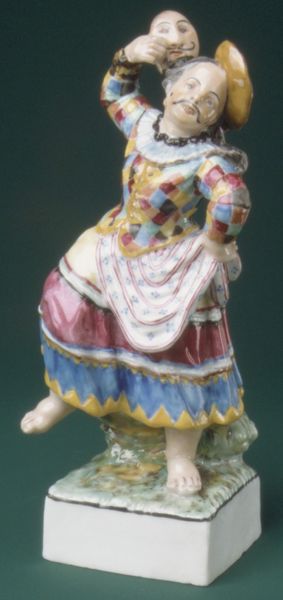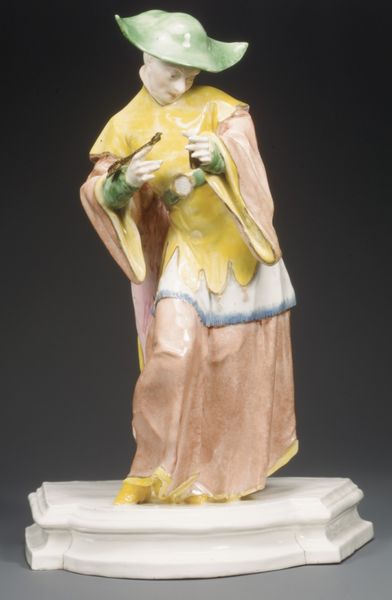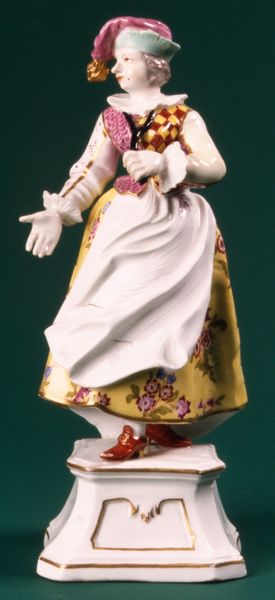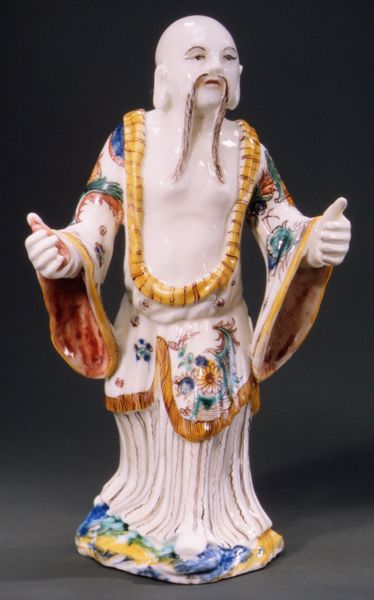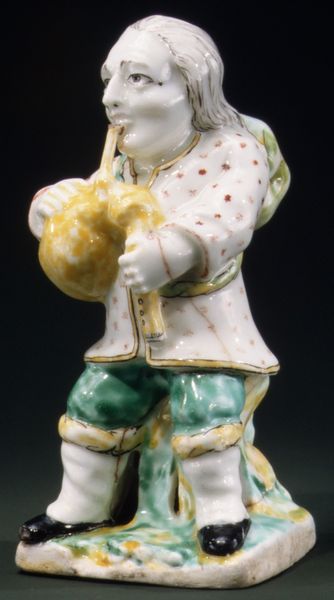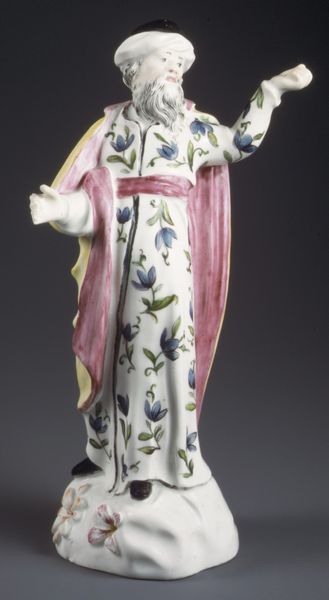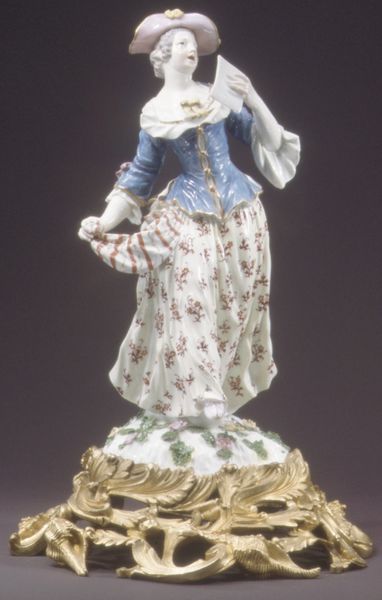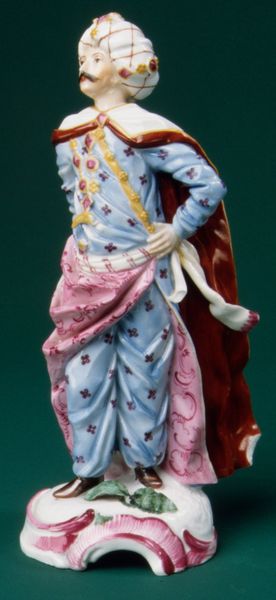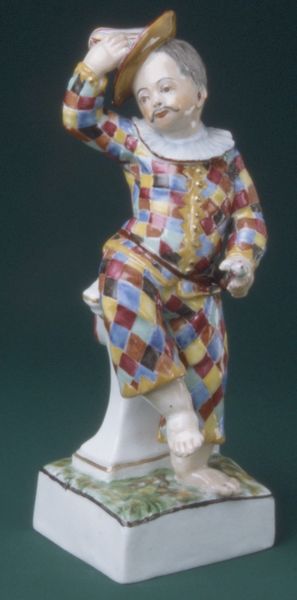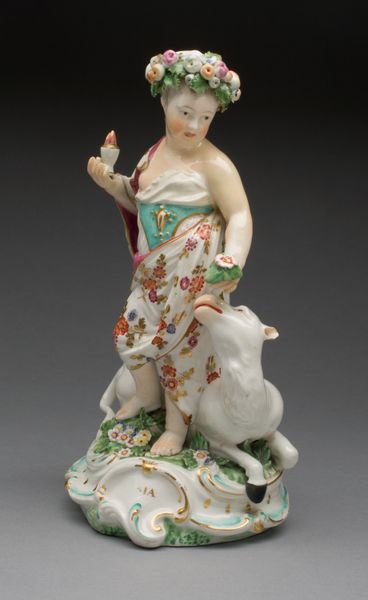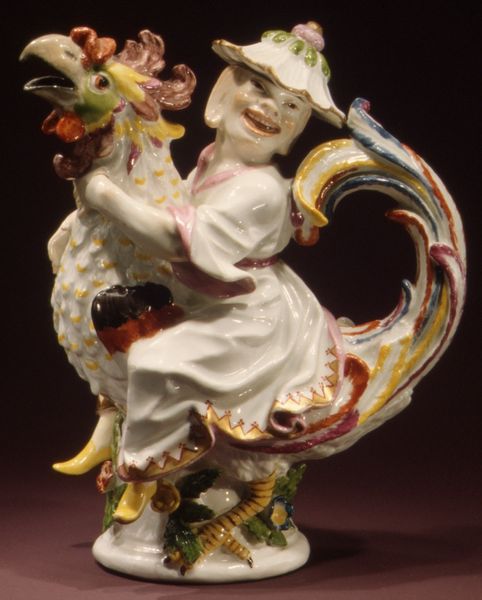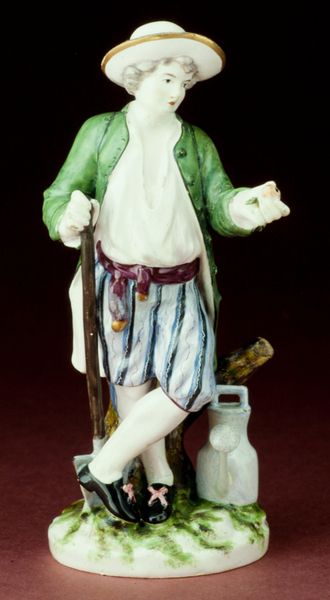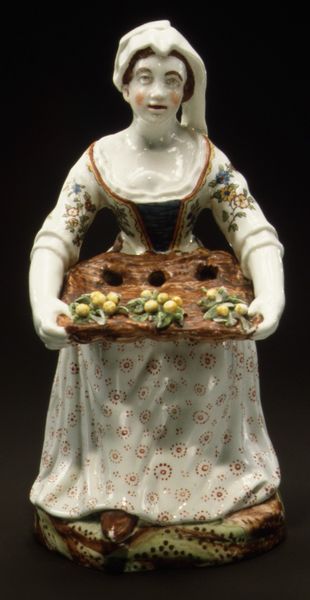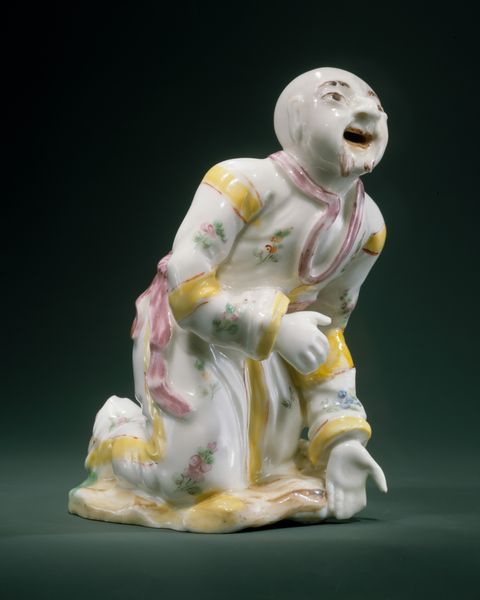
ceramic, porcelain, sculpture
#
portrait
#
sculpture
#
asian-art
#
ceramic
#
porcelain
#
figuration
#
sculpture
#
decorative-art
#
rococo
Dimensions: Height: 10 3/16 in. (25.9 cm)
Copyright: Public Domain
Curator: Our attention is drawn to "Seated Chinese," a porcelain sculpture from the Mennecy manufactory, dating roughly from 1750 to 1770. It now resides at the Metropolitan Museum of Art. Editor: What strikes me immediately is the rococo flamboyance meeting... well, something else. The porcelain gleams, but there's an earthy feel to the base and the coloration in those trousers. It seems to straddle luxury and something more… grounded. Curator: Precisely! The figure itself offers a layered view into 18th-century European perceptions of the East. He’s depicted in a way that blends chinoiserie ideals with European aesthetics, evident in the delicate floral patterns on his robe and that enigmatic half-smile. Editor: The act of producing this also is significant, isn’t it? The labor, the skill, and the specialized knowledge to manipulate porcelain, a material highly prized. How dependent was this workshop on expertise gleaned, perhaps indirectly, from Chinese production methods? Curator: That's a crucial question. European porcelain production was deeply entangled with a desire to emulate and capture the secrets of Chinese craftsmanship. In this case, this emulation reflects Europe's growing fascination with what they perceived as the "Orient", filtered through imagination and societal values. It’s a pastiche – not truly "Chinese," but reflecting European desires and interpretations. Editor: So it is an aspirational object in many senses of that word. The material value mirroring that projection onto the figure and culture? Curator: I think that nails it. The sculpture's material allure amplified and helped materialize these fantasies of exoticism, power and luxury associated with "the Orient." It also underscores the cultural narrative. Editor: Considering all that, looking at the figure itself – the seated pose, the gesture with what looks like a riding crop, even that specific facial expression… Is there any argument this attempts to imbue the sculpture with a sense of irony, perhaps reflecting an evolving perspective on those initial projections? Curator: It's compelling to see hints of potential mockery in the posture, almost as if challenging the idealization it otherwise performs. What was intended as reverie begins to fold back upon itself. Editor: Fascinating. So much material craft speaking volumes on aspiration, perception, and potential contradiction. Curator: Indeed. A compact symbol laden with its own history and ironies.
Comments
No comments
Be the first to comment and join the conversation on the ultimate creative platform.
